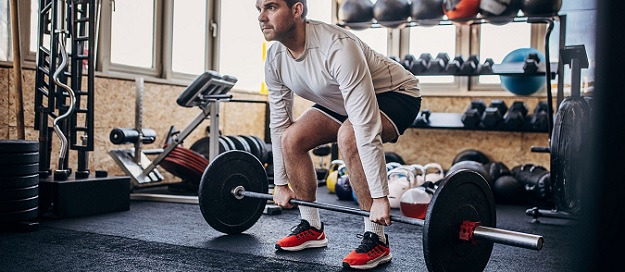Cardio and weightlifting have been debated in fitness and weight reduction for years. Each strategy has pros and ardent followers leaving many wondering which is best for losing those pesky pounds. Let examine how each affects metabolism, fat reduction and weight control.
The Cardio Conundrum
Cardio includes jogging, cycling , swimming and brisk walking. It aims to increase heart rate, oxygen consumption and caloric expenditure. Cardio is touted for its capacity to burn many calories in one session making it appealing for quick weight reduction.
Regular cardio may provide scale outcomes. People may lose weight by burning more calories than they eat. Besides weight reduction aerobic activities boost cardiovascular health endurance and mood. Although helpful exercise for weight reduction has limitations.
Although early success is encouraging the body might adapt to regular fitness regimens reducing returns. Only using cardio for weight reduction may disregard the value of strength training in maintaining lean muscle mass which is vital for a robust metabolism.
The Strength Of Weightlifting
Contrary to common opinion, weightlifting , also called resistance training, can help you lose weight. Unlike cardio which focuses on calorie expenditure during the activity, weightlifting has metabolic benefits outside the gym. Weightlifting helps develop and retain lean muscle and metabolism occurs in muscle tissue even at rest.
Strength training increases muscle mass and basal metabolic rate BMR increasing daily calorie burn. Weightlifting increases EPOC or the afterburn effect. After rigorous weightlifting the body consumes more oxygen to rebuild muscle tissue and restore physiological equilibrium. This heightened metabolic state might last hours, increasing calorie expenditure after the activity.
Finding Balance
Synergy may be the key to which workout modality is best for weight reduction. By combining aerobic and weightlifting fitness goals may be met. Combining exercise and weightlifting may maximize their advantages and minimize their drawbacks. Cardiovascular activity helps start weight reduction and improves cardiovascular health by burning calories.
Weightlifting preserves lean muscle mass, boosts metabolism and tones the body. Cardio and weightlifting synergize beyond weight reduction. A balanced fitness regimen with both modalities may improve performance, minimize injury risk and encourage long term activity.
The Role Of Nutrition
While exercise is essential for weight reduction, eating is vital too. Whether one prefers exercise or weightlifting a calorie deficit is necessary for fat loss. Without healthy food, calorie intake and expenditure may outweigh the advantages of exercise.
Exercise and diet are complementary parts of a healthy lifestyle therefore a balanced weight reduction plan includes both. Nutrient dense diets help cardio athletes maintain energy and healing while weightlifters need protein to repair and increase muscles.
Portion management and mindful eating help people manage their calories and make wise food choices. A balanced relationship with food and emphasizing complete healthy alternatives may boost exercise efficacy and help people lose weight long term.
Beyond The Scale
Exercise generally focuses on weight reduction but genuine health and fitness go beyond the scale. Cardio and weightlifting have many advantages beyond weight reduction such as improving well being and quality of life. Research shows that cardiovascular activity lowers the chance of chronic infections including diabetes, heart disease and stroke.
Aerobic exercise improves cardiovascular function, mood and cognition, improving quality of life and lifespan. Additionally weightlifting has several advantages beyond body composition. Resistance exercise reduces osteoporosis and age related muscle loss by improving bone density, joint health and functional ability.
AStrengthimprovements may boost self esteem and mental health. A comprehensive approach to exercise that prioritizes strength endurance and health may help people live a sustainable lifestyle beyond weight reduction.
Individual Preferences And Lifestyle Factors
The debates on cardio and weightlifting must understand that no one size fits all fitness plan exists. Weight reduction strategies depend on personal preferences, lifestyle variables and objectives. Rhythmic aerobic activities like jogging or cycling may comfort some people.
Others like the challenge and empowerment of weightlifting, pushing their bodies and building strength. Time restrictions, equipment availability and injury history might affect exercise choices and adherence. High intensity interval training HIIT exercises that include cardio and strength training may help busy people lose weight faster.
The best workout routine fits an individual interests objectives and lifestyle encouraging fun consistency and long term commitment. By embracing various exercise techniques and customizing regimens people may optimize their weight reduction results.
The Importance Of Consistency And Progression
Success in weight reduction depends on consistency and growth whether one does cardio weightlifting or both. Regular workouts and steady progress provide sustainable effects. A constant training plan requires a long term commitment.
Consistency is critical to generating momentum habits and development whether you’re doing cardio three times a week or weightlifting. Progress is also crucial which challenges the body to adapt and develop. Over time the body adjusts to demands requiring intensity volume or frequency modifications to gain.
Progressive overload gradually increases the weight lifted cardio time or exercise intensity which keeps the body aroused and receptive to training stimuli. Consistency and progression in exercise help maximize efforts to overcome plateaus and produce sustained weight reduction outcomes.
Addressing Common Misconceptions
Fitness enthusiasts are frequently misled about cardio and weightlifting. Some people think weightlifting is solely for strength building and cardio is exclusively for weight reduction. Both cardio and weightlifting help lose weight in various ways each with its advantages.
While aerobics may burn more calories in one session weightlifting has metabolic benefits that may increase long term calorie expenditure and fat reduction.
Another common fallacy is that women become big or muscular from weightlifting. Indeed hormonal variations make it harder for women to gain muscle growth without particular exercise and nutritional modifications.
Weightlifting may help women reduce body fat, increase metabolism and improve strength and function. By debunking myths and teaching people the advantages of cardio and weightlifting we can empower them to make educated exercise choices and optimize their weight loss potential.
The Role Of Recovery And Rest
When trying to lose weight thinking more activity is better is natural. Rest and recovery are also crucial to a well rounded exercise routine. Without enough recovery overtraining may lower performance, increase injury risk and stop progress. Both exercise and weightlifting stress the body causing physiological adaptations during rest.
The body repairs muscle tissue, refills energy and responds to training during rest intervals whether between cardio workouts or after a heavy weightlifting activity. Exercise rest days help the body recuperate and avoid burnout and overuse issues.
Adequate sleep diet and stress management aid the body healing ensuring optimum performance and improvement.
Recognizing the significance of recovery and rest in weight reduction helps people combine challenging exercises with proper recovery resulting in long term fitness success.
Conclusion
The pros and downsides of exercise and weight lifting for weight reduction are complex. Integrating cardio and weightlifting into a workout routine may boost outcomes and long term success. Consistency progression and recovery may help people lose weight sustainably and receive the health advantages of exercise. Finding a balanced strategy that matches personal preferences, lifestyle variables and objectives improves health, energy and well being.





